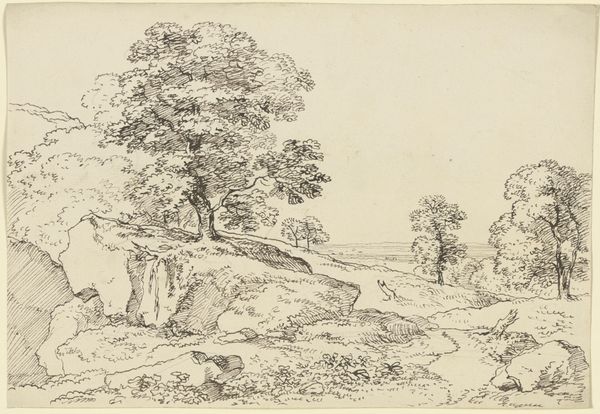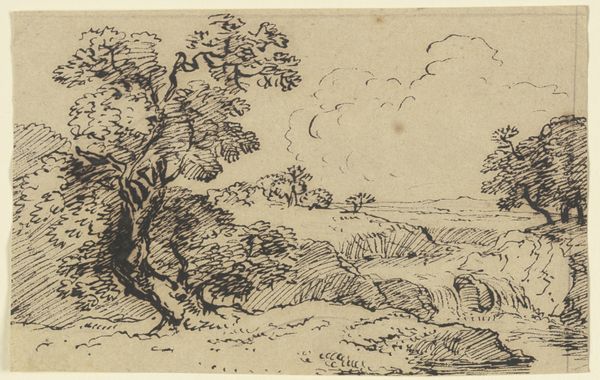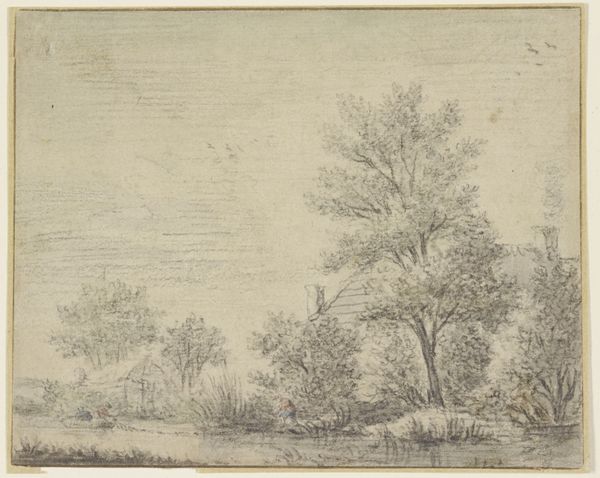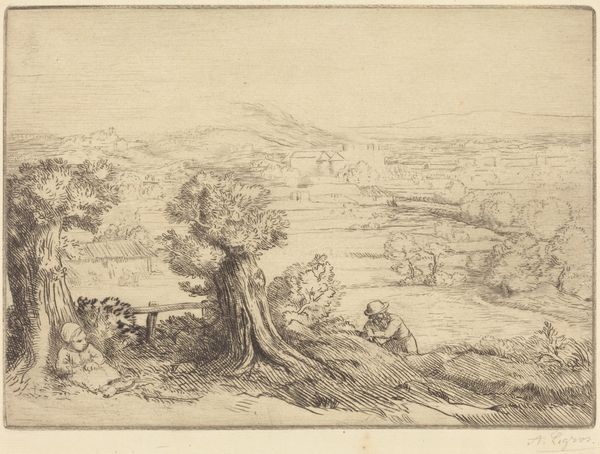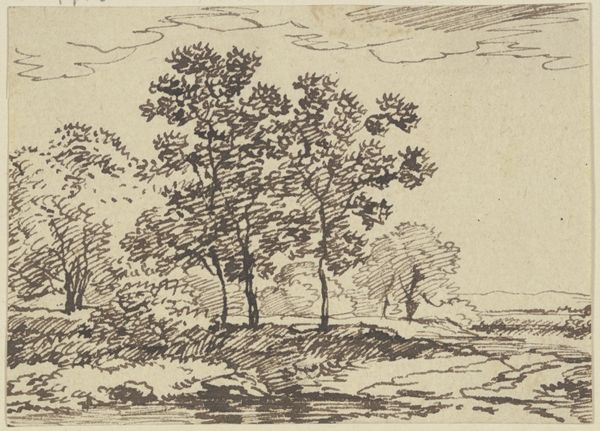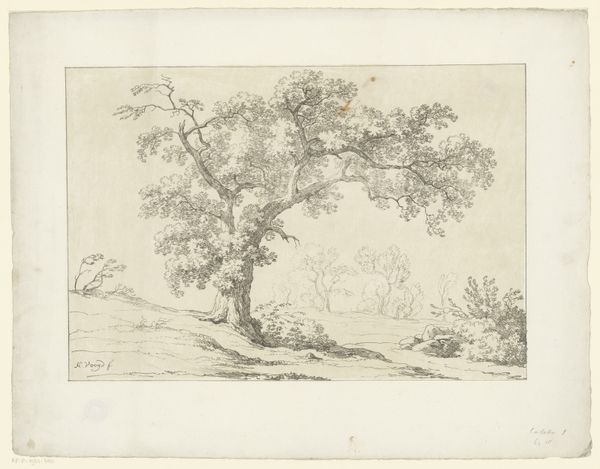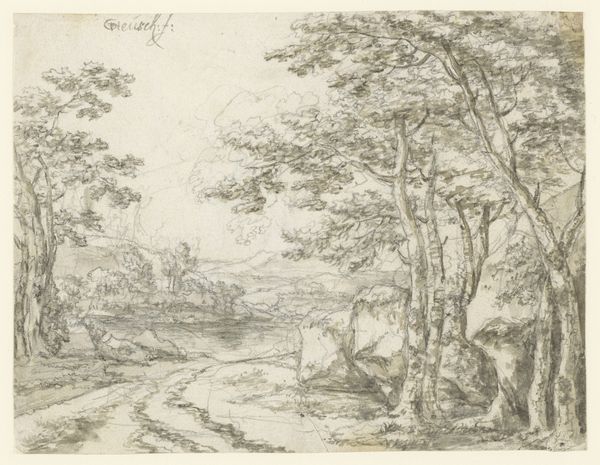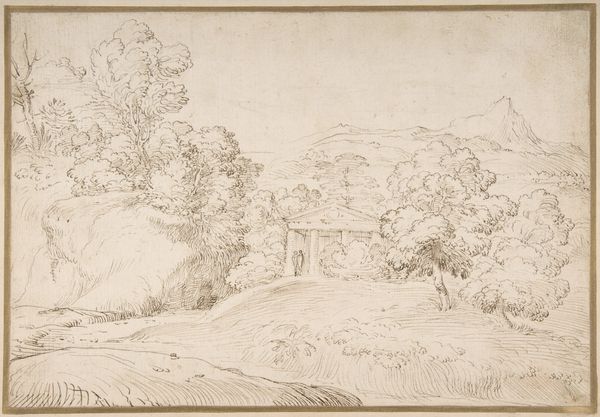
drawing, etching, ink, chalk, graphite
#
drawing
#
baroque
#
etching
#
landscape
#
etching
#
ink
#
chalk
#
graphite
Copyright: Public Domain
Editor: Here we have Matthäus Merian the Elder's "Upper Rhine Landscape," created around 1624, employing ink, graphite, chalk, and etching. It feels very tranquil and carefully constructed; I am particularly drawn to how the artist uses line to create depth. What strikes you most about the visual elements of this work? Curator: Observe how Merian structures the composition through a strategic manipulation of line and form. The prominent tree on the left acts as a framing device, guiding the viewer's eye towards the receding landscape. Notice the textures; how do the contrasting applications of graphite and chalk contribute to the overall formal balance? Editor: It’s interesting you mention the framing tree – I hadn’t thought of it in terms of a conscious compositional tool. What about the scale? I am intrigued by the relative proportions in this piece. Curator: Scale operates here as more than a mere depiction of reality; the diminishment of figures against the landscape introduces a calculated hierarchy. Note how the application of etching delineates the subtle interplay between light and shadow; does this technique not invite a critical assessment of the artist's engagement with pictorial space? Editor: Yes, definitely, it highlights that contrast. It’s amazing how much depth he creates with just lines and shading. It makes me want to try replicating the technique. Curator: Indeed, replicating his approach would offer you a new understanding. In examining his technique, you come to find a greater appreciation for the artist's calculated formal choices and application of materiality. Editor: Thanks, I'm starting to see so many more connections than I did initially. The subtleties in the formal arrangement truly shape the experience of this work. Curator: Precisely, and the close visual analysis unlocks these deeper nuances embedded within the artistic language.
Comments
No comments
Be the first to comment and join the conversation on the ultimate creative platform.
